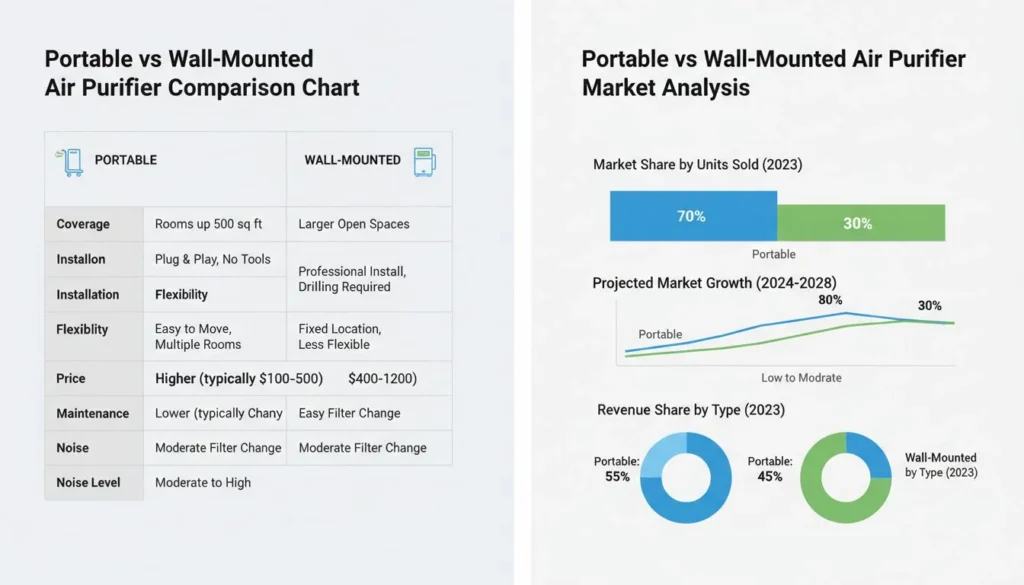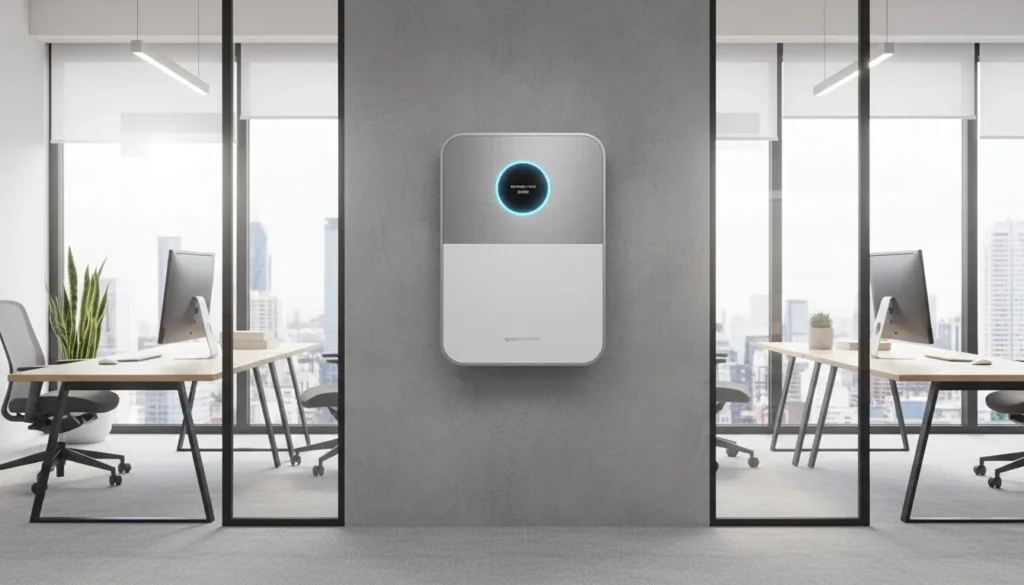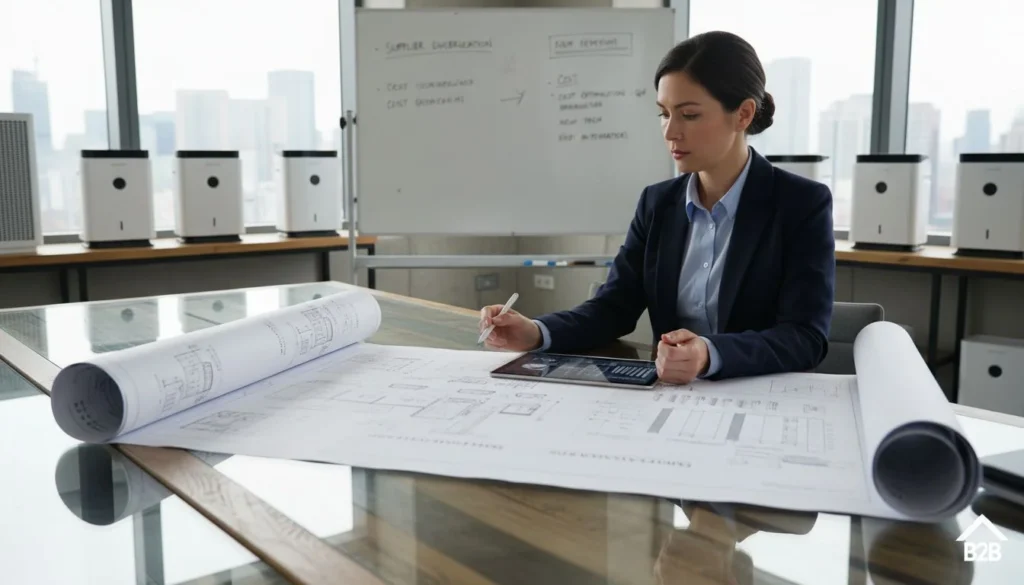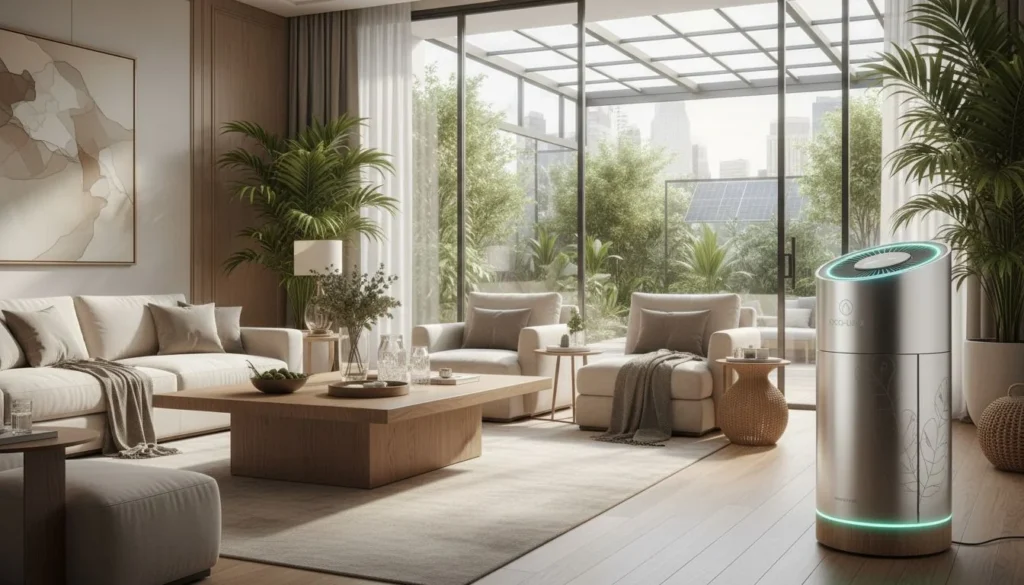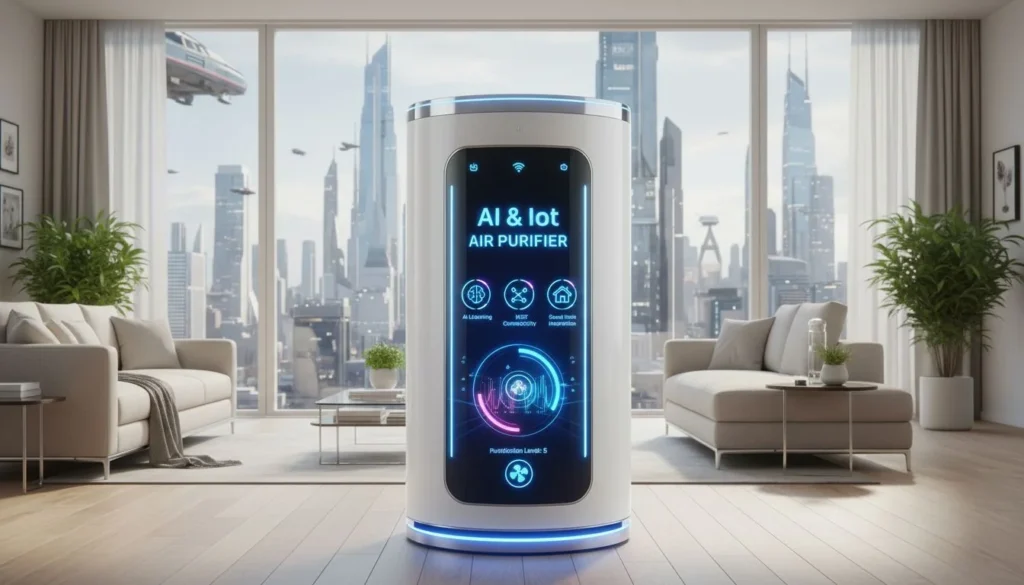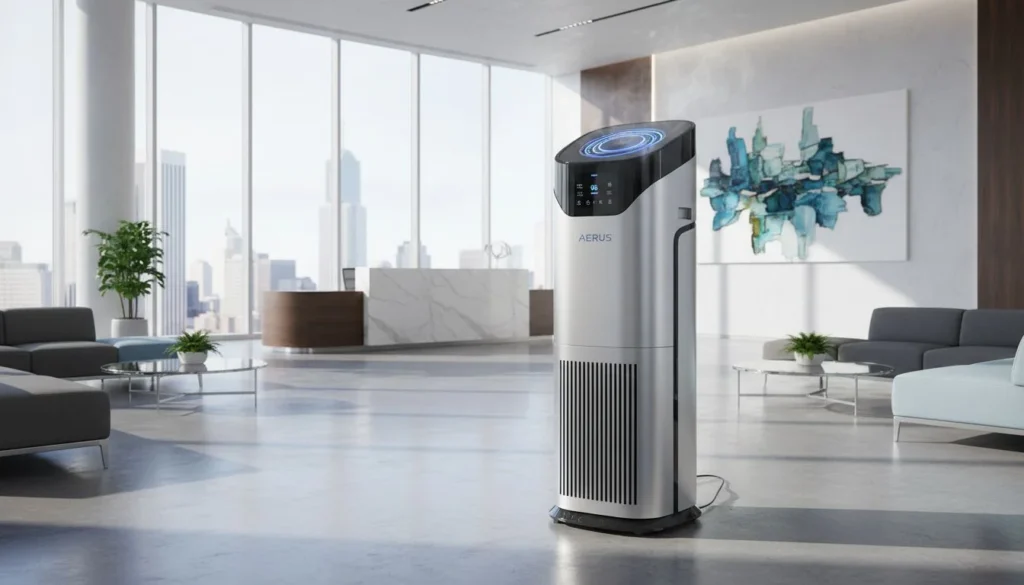Si dice che i depuratori d'aria catturino e uccidano i virus, come il COVID-19. È un dato di fatto? La risposta breve è sorprendentemente SÌ , e degneremo ulteriormente questa risposta con le seguenti basi scientifiche.
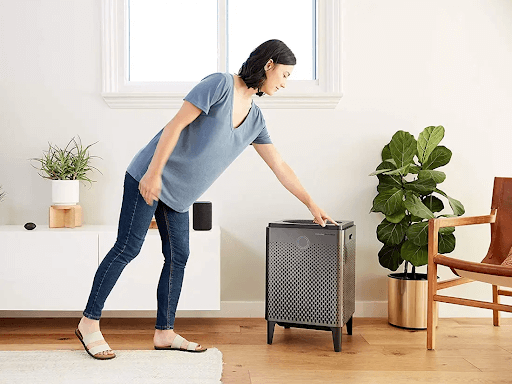
Per prima cosa è necessario sapere che:
Il virus COVID-19 è vicino a una dimensione di 0,125 micron (125 nanometri). I virus così piccoli non possono essere facilmente filtrati dall'aria attraverso un filtro standard.
Pertanto, se si desidera mantenere un ambiente interno più sicuro e privo di virus in sospensione, è opportuno utilizzare una marchio di fiducia per la purificazione dell'aria con la giusta tecnologia.
Purificatori d'aria con Filtri HEPA può filtrare i contaminanti fino a 0,3 micron .
Inoltre, la lampada LED UV-C ad alte prestazioni, come in HisoAir sterilizza ed elimina organismi e virus. In pratica, la luce UV dispiega il rivestimento proteico del virus, inattivandolo efficacemente.
Da qui, approfondiamo la questione.
Come si trasmettono le malattie trasmesse per via aerea?
Nell'ottobre 2020, i Centri per il controllo delle malattie (CDC) hanno reso nota la loro posizione su come si trasmette il virus Covid-19 .
Si legge: "il virus può essere trasmesso in particelle e piccole goccioline che permangono nell'aria per alcuni minuti o addirittura per ore".
Ciò significa che il CDC concorda con la trasmissione del virus per via aerea attraverso aerosol o schizzi in sospensione.
Inoltre, molte persone oggi tendono a lavorare da casa o a rimanere in casa a causa del crescente numero di casi di COVID, di serrate e di coprifuoco. Ciò può comportare una scarsa ventilazione e qualità dell'aria, dato che un numero maggiore di persone è costretto in casa.
Di conseguenza, le probabilità di diffusione di malattie trasmissibili in ambienti chiusi aumentano a causa della scarsa circolazione dell'aria.
3 modi in cui la Covid-19 si diffonde attraverso la trasmissione per via aerea
Ci sono 3 modi in cui può avvenire la trasmissione per via aerea di COVID-19 secondo il CDC:
- Aree chiuse - quando una persona è esposta in uno spazio chiuso subito dopo che una persona infetta ha lasciato quel luogo.
- Esposizione prolungata a particelle nocive - essere esposti alle goccioline in sospensione nello spazio.
- Scarsa ventilazione o unità di trattamento dell'aria inadeguate creando particelle e goccioline respiratorie in sospensione.
Questo ci porta a credere che i sistemi di purificazione dell'aria, come i depuratori d'aria, le macchine per la disinfezione e i depuratori d'aria, svolgano un ruolo fondamentale nella pulizia di ciò che respiriamo.
Come funzionano i depuratori d'aria?
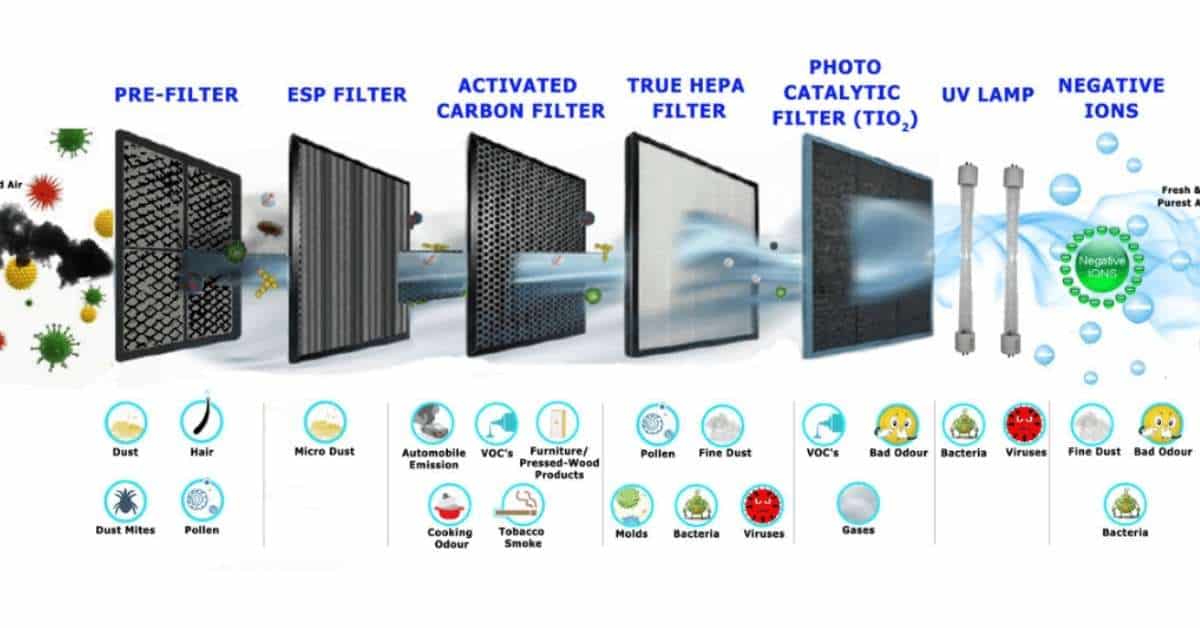
I depuratori d'aria sono dotati di diverse tecnologie di filtraggio per igienizzare e pulire l'aria da inquinanti, particelle in sospensione, allergeni e virus.
Ciò significa che non solo rimuove le particelle filtrandole, ma igienizza e uccide anche i virus.
I depuratori d'aria possono essere dotati di filtri HEPA, carboni attivi, ionizzatori o raggi UV, o una combinazione di tutti. La combinazione di filtri determina il tipo di particelle che vengono esattamente eliminate dall'aria. Alcuni tipi di depuratori d'aria intrappolano solo i contaminanti dell'aria, mentre altri sono progettati con filtri che uccidono e neutralizzano batteri, virus e cattivi odori.
Ok, molte persone sono molto confuse e disinformate sul fatto che i filtri HEPA possano catturare virus di piccole dimensioni, come il Coronavirus.
I filtri HEPA sono in grado di rimuovere il 99,97% delle particelle presenti nell'aria fino alla dimensione di 0,3 micron. Il COVID-19 ha un diametro compreso tra 0,06 e 0,14 micron.
Questo avviene attraverso la Diffusione. Secondo uno studio scientifico della NASA I filtri HEPA possono catturare virtualmente 100% di particolato.
Si è scoperto che il Coronavirus è così piccolo e leggero che viene rimbalzato quando colpisce le molecole di gas.

Come i Coronavirus "volano" in modo casuale, a zig-zag, attraverso il movimento browniano
Grazie a questo movimento a zig-zag, ogni volta che i virus attraversano il filtro HEPA, si bloccano sulle sue fibre.
Ciò significa che nei filtri HEPA possono essere intrappolate particelle fino alla dimensione di 0,1 micron, compreso il virus COVID-19. Una volta intrappolato, il filtro HEPA tiene prigioniero il virus in modo che non possa tornare nell'aria. Una volta intrappolato, il filtro HEPA trattiene i virus in modo che non possano essere reimmessi nell'aria.
Ma i virus vengono uccisi? Il coronavirus su un filtro HEPA può virtualmente durare Da 48 a 72 ore prima che muoia o si inattivi.
Come funziona la luce UV per uccidere virus come il COVID-19?
Un altro tipo di funzione di pulizia dell'aria è l'integrazione della luce UV. I raggi UV sono dannosi per uccidere ed eliminare batteri e microbi viventi. Tuttavia, dipende anche da:
- come viene utilizzata la luce ultravioletta e,
- la durata dell'esposizione al virus.
Se la lampada UV è disposta come un componente sterilizzante che illumina i batteri intrappolati, è dimostrato che è efficace. Ma se l'aria aspirata viene fatta passare solo attraverso la luce UV, potrebbe non essere efficace nell'uccidere il virus.
Depuratori per la disinfezione dell'aria di HisoAir sono infatti integrati con 4 stadi di pulizia, che comprendono filtri HEPA, pre-filtri in nylon, carbone attivo e lampade UV per eliminare efficacemente i contaminanti.
Gli ionizzatori uccidono i virus?
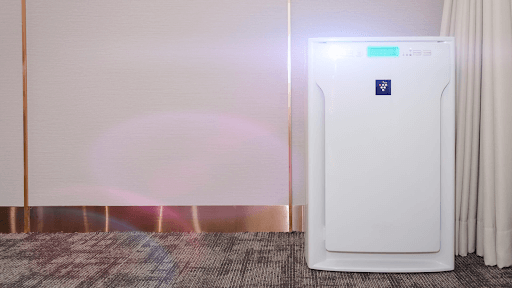
Alcuni depuratori d'aria sono dotati di ionizzatori come parte della loro tecnologia di pulizia dell'aria. Gli ionizzatori funzionano inducendo cariche elettriche sulle particelle presenti nell'aria.
Queste particelle vengono quindi attirate verso oggetti e superfici con carica opposta. Può trattarsi di mobili, tappeti, pavimenti o soffitti. Esistono anche depuratori d'aria che emettono ioni negativi per attirare ioni con carica positiva. In questo modo si neutralizzano i contaminanti nocivi. Tuttavia, questa soluzione induce emissioni di ozono che è dannoso per l'ambiente.
I virus possono essere fragili, ma non bastano le cariche negative per distruggerli. Di conseguenza, gli ionizzatori non possono essere usati per uccidere da soli il COVID-19. Ma c'è un problema.
Poiché i virus possono aggrapparsi ai contaminanti presenti nell'aria, lo ionizzatore può impedire ai virus di raggiungervi.
Per esempio, questo studio ci racconta come i ricercatori utilizzano uno ionizzatore per evitare che le cavie si ammalino a causa del virus dell'influenza.
Filtri fotocatalitici, al carbonio, alla catechina
Esistono altri filtri utilizzati in diversi marche di purificatori d'aria come i filtri fotocatalitici, i filtri a carbone o i filtri a catechina.
- Purificatori d'aria con filtri fotocatalitici può intrappolare e uccidere virus e batteri. Inoltre, può abbatterli attraverso l'ossidazione degli ioni.
- Filtri a carbone o filtri a carbone attivo nei depuratori d'aria sono utilizzati per intrappolare composti organici volatili, fumi, smog e odori.
- Filtri di catechina hanno caratteristiche antibatteriche e antimicotiche, ma sono raramente presenti in molte marche di purificatori d'aria.
Questi filtri e sterilizzatori sono sicuri da usare?
Non esattamente. Almeno se non si è direttamente esposti all'ozono, va bene. I depuratori d'aria con filtro HEPA, luce UV e ionizzatori possono essere utilizzati.
Tuttavia, l'inalazione di ozono è una storia diversa. Può causare tosse, irritazione della gola e allergie. Può anche causare danni ai polmoni e aggravare i problemi respiratori e l'asma. Ciò significa che se si soffre di problemi polmonari, non si dovrebbero usare depuratori d'aria con ozono o ionizzatori.
Le ricerche hanno anche scoperto che i generatori di ozono non sono molto efficaci nella prevenzione delle muffe o nell'inibizione dei batteri. Per questo motivo non è sicuro utilizzarli nelle camere d'ospedale e in altre unità sanitarie.
Conclusione
Speriamo che questo articolo vi abbia aiutato a capire come alcuni tipi di depuratori d'aria possano uccidere i virus e prevenire la diffusione della COVID-19 attraverso la trasmissione per via aerea.
Come abbiamo sottolineato, i depuratori d'aria con filtri HEPA sono in grado di catturare anche la più piccola gamma di virus, come il Coronavirus. Questi virus possono rimanere attaccati all'HEPA per 48-78 ore prima di morire.
Ma i sistemi di purificazione dell'aria più efficaci sono quelli con luce UV, che agisce distruggendo questi contaminanti nocivi. Inoltre, la luce UV non è nociva, a differenza dei generatori di ozono e dei depuratori a ionizzatori.
Se volete acquistare all'ingrosso Purificatori d'aria H13 HEPA con luce UV HisoAir può aiutarvi. Siamo un'azienda OEM/ODM con 15 anni di esperienza e una fabbrica certificata ISO.


